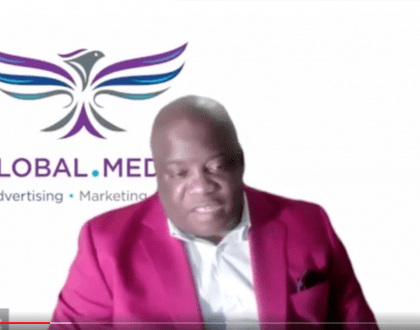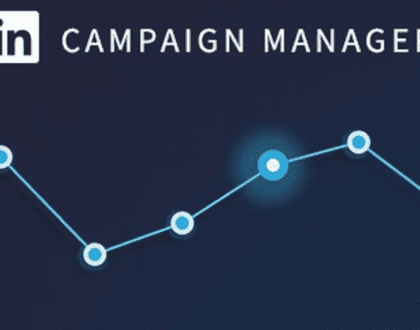My Top 1 List of Experts You Should Listen To – repost
by EnyOsung
We really like this article because its key message – ask your customers – works for very business. We think you will find it useful to get more customers and sell more. Read on to find out why you should listen to your customers to work out what you can do to get more conversions.
My Top 1 List of Experts You Should Listen To

Where’s my shopping gone?
I’m going to tell you a story (a short one).
Not long ago I was thinking of going to a football match (one of the lesser London teams) and I visited their website a number of times. I put a ticket into my virtual basket and went to the final stage of the transaction no fewer than six times before I actually bought.
I didn’t abandon because there was anything wrong with the system but because I’m odd (or maybe just normal). I wanted to feel what it was like if I were to buy the ticket and to see if I really wanted to attend the match. I was testing myself to see if this was something I really wanted to do. I’d say it actually needed me to go through that process in order to confirm my intention to buy. You could call it a form of engagement before making my mind up. But in the site’s aggregated stats it would have appeared as a low transaction to click rate (14.29% to be exact, as I bought on the seventh attempt).
It could be that I’m particularly eccentric by behaving in that way but I’d suggest it’s not unusual. The thing is, as a marketer or business owner, how do you know whether your low conversion rate is due to problems with your website or the unpredictable behavior of your customers?
Your analytics will tell you what happens on your website but not why and the main purpose of this post is to say that you have to listen to your customers.
There’s nothing like usability tests for doing this.
The Problem
I have a client with an established website, which brings in 50% of all sales. The site has been developed over a number of years and, by and large, is effective (clearly, as a good proportion of sales come that way). A look over it says there’s not much wrong and a previous marketing consultant gave it a clean bill of health, based on his experience and gut instinct.
The conversion rate (transactions to visits) was 2.7%, which is more or less standard for most ecommerce sites. What do you do in that situation? Everything seems to be “good enough” but if you want to improve the site (in particular the conversion rate) there’s plenty of scope, with over 97% of visits resulting in no sale. Where do you begin?
A good analysis of the statistics and an understanding of how the funnel works is a place to start. This site had strong calls to action in the form of a Buy button, prominently displayed. Clicks on these buttons, measured over time, showed an average of 12.5% of all visits (so for every 100,000 visits there were 12,500 clicks on the buy button).
Snapshot dangers
I’ll take time out here to say that snapshot measurements can be very dangerous and averages can easily disguise the true nature of what’s happening. 12.5% was the average over a long period of measurement but at any one time the conversion rate (clicks to visits) was hardly ever 12.5%. There was variation (between 10.4% and 13.9% for any one week period) due to a wide range of factors. I’ll write more about this issue in time.
For now, it’s enough to know that the overall rate was 12.5%, of which an average of 21.6% completed their purchase. At the risk of drowning in numbers, this means the overall conversion rate (transactions to visits) is 2.7% and 78.4% of clicks on the buy button resulted in no sale.
Why is this happening to me?
Now, a figure like that always looks shocking – nearly 80% or four out of five website users abandon their purchase after clicking BUY – but it indicates one of (at least) two things. Either there’s something wrong with your website and you are losing customers after they’ve committed to buy or you don’t know why they clicked in the first place.
Is clicking a buy button necessarily a serious commitment to buy? Website users, like most of us in most areas of life, can behave in seemingly illogical ways, as I did with my football ticket. I think it’s wrong to expect people to behave logically and to think you can fix the problem by controlling their behaviour. You have to find out what is in your control and what is not.
How did we go about solving the problem of my client’s “good enough but could certainly be better” problem? A small improvement in the conversion rate would make a significant difference to income, so it ‘s something that couldn’t be ignored any longer.
Usability testing
We began by running a series of usability tests with customers. This may sound grand, summoning up images of sophisticated technical set-ups and reporting systems, but it can be done quite simply, provided it’s well-planned and executed. Like any research project, you need to be clear on what you want to know and what you will do with the data and, a key point,you must target the right people.
A usability study basically involves observing customers using your website, revealing their behaviour online and giving you invaluable feedback about design and functionality.
I won’t go into the details of how to arrange such tests here but suffice to say that, if properly carried out, they can throw up important insights. With this client, I suspected that eccentric behaviour was the explanation for the seeming click-happiness of the visitors (aren’t they just doing what I was with my football ticket?).
Talking to and watching customers in action proved this to be only partly correct. A number of unforeseen issues with the functionality, that could have a dramatic impact on the number of people who complete their purchase, also became clear fairly quickly. We then quantified some of the findings with online surveys.
Listen to your customers
It enabled us to put in place a programme of tests, some of them quite small tweaks, that could have a major impact long-term. I’d like to report fantastic leaps in conversion rates but, at this stage, the work is ongoing and I will have to report back on that later. In the meantime, the insights gained from a proper dialogue with the customers has allowed us to go beyond all the second-guessing and complacency around the website and get feedback directly from the experts you should really be listening to – your customers.
Comment: All of the expert analysis in the world will not always tell you exactly what is going on with your website. Asking your visitors and customers directly, perhaps with an incentive to engage in your customer research, will tell you exactly what the real people that matter think as they try to do business with you on your website.
Other posts you may like:
Survey questions and tools to find out why visitors are not buying
Small business’ digital marketing vicious cycle
Sorry excuses for not going digital marketing & 5 social marketing myths busted
—
Our Digital Marketing Services:
Search Engine Optimisation| Content Development & Marketing| Email Marketing| Pay-Per- Click| Social Media Marketing| App Development & Marketing
**************************************************************************************************************************************************************************************
smallbiz-emarketing provides expert market research, marketing on all digital platforms and offline advertising consultancy specifically for small businesses and start-ups for whom money is tight. Checkout our services page to see how our digital marketing services can help your business to get more customers and sell more, faster. Also checkout our pricing page to see our genuinely affordable digital marketing packages for small businesses and startups. Why not sign up for our newsletter using the simple form on the right? You can also follow us on social networks. Finally, please share this article with your network using the share buttons below.
**************************************************************************************************************************************************************************************
smallbiz-emarketing would love to have you thoughts about this post. Has customer research transformed your business? What obstacles have you experienced in getting customers’ feedback? Please leave your comments here.
Recommended Posts

Eny talks with Lydia on The Joyful Path Podcast
9th December 2022

How to use new LinkedIn Campaign Manager
20th July 2022



